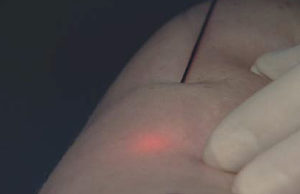Smartlipo is the most popular trend in liposuction body contouring. Despite the fact that it is heavily marketed by the manufacturer and doctors alike, there is real science and engineering to it. While lasers are commonly perceived like a video game, the principles behind laser liposuction is a bit more complex.

The newest version, known as Smartlipo MPX, provides a dual laser wavelength delivery. The fundamental principle behind laser liposuction is to deliver sufficient heat into the desired fat removal site that a large number of fat cells literally explode The primary source of heat for fat (specifically water) is the Nd:YAG (1064nm wavelength) whose heat levels cause ruptured fat cells on contact and collateral fat damage from the amount of heat created. The objective is to drive the internal temperature up to about 42 degrees Centigrade where most fat cells are sufficiently damaged to become liquefied. In addition, the laser probe seals whatever blood vessels are in its path through direct contact. This means that bleeding and bruising are minimised.
The other wavelength is 1320nm which is more specific for the collagen in the skin. By driving the skin temperature up, one creates the potential for a skin tightening effect as well. This tightening effect can be enhanced by increasing the ratio of 1320:1064 (blend) and running the probe directly on the underside of the skin. I usually does this as the final liposuction step when I am finished suctioning an area. This may someday be proven to be useful for cellulite as a ‘laser pickling’ technique but for now this is more theoretical than proven science.
The fat that has been liquefied is largely suctioned after laser treatment. The liquefied fat that is not removed by suctioning is ultimately metabolized and drains harmlessly away via the lymphatic system. For this reason, the final results after Smartlipo treatment may not be fully seen for several months until all fat residue is eliminated. This is an important point that I emphasize to my Indianapolis plastic surgery patients.
Dr. Barry Eppley
Indianapolis, Indiana


